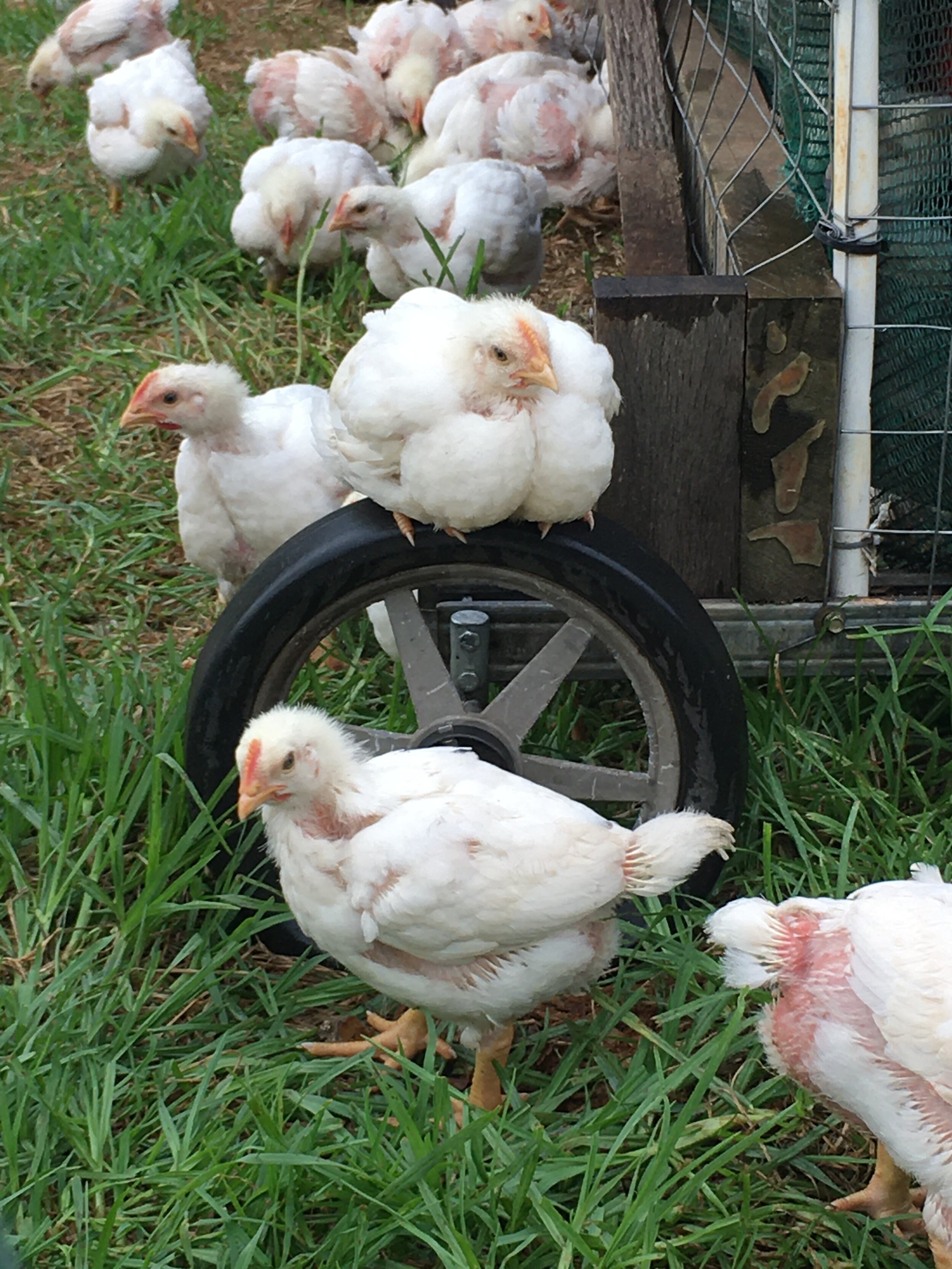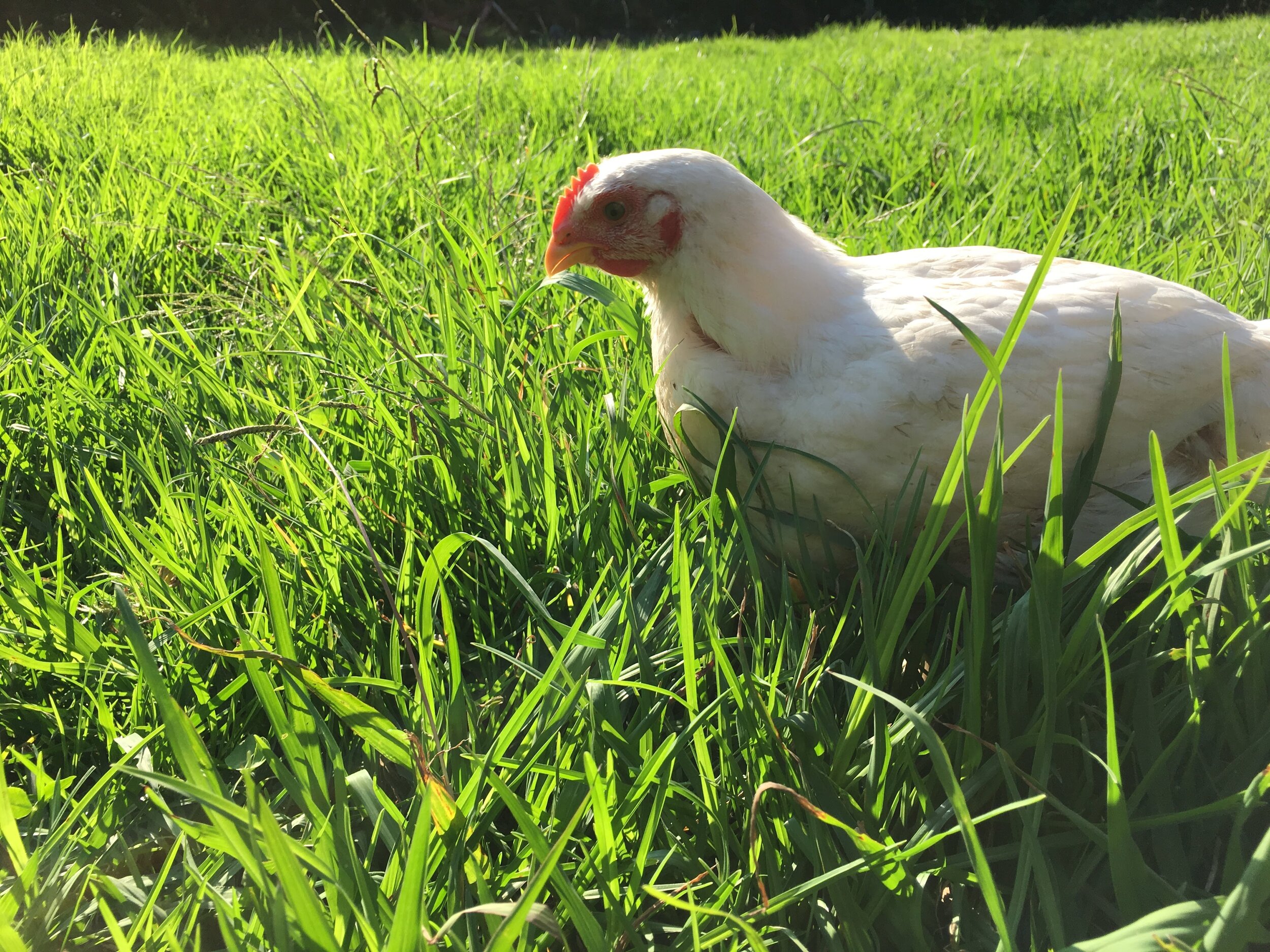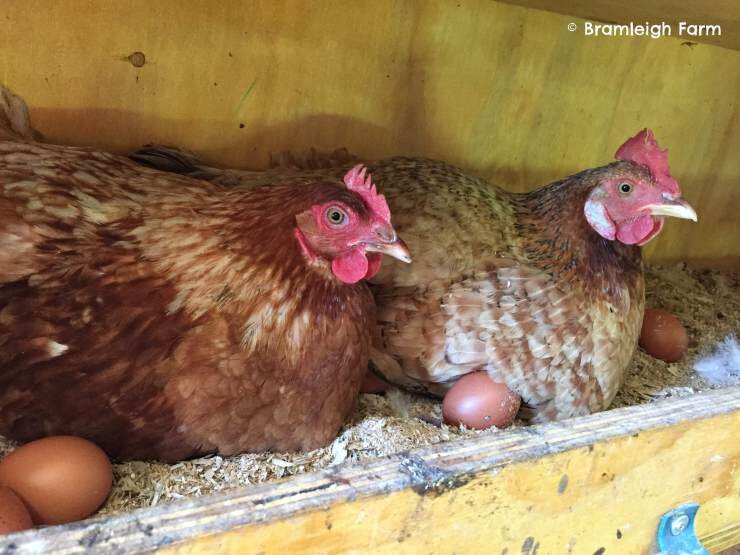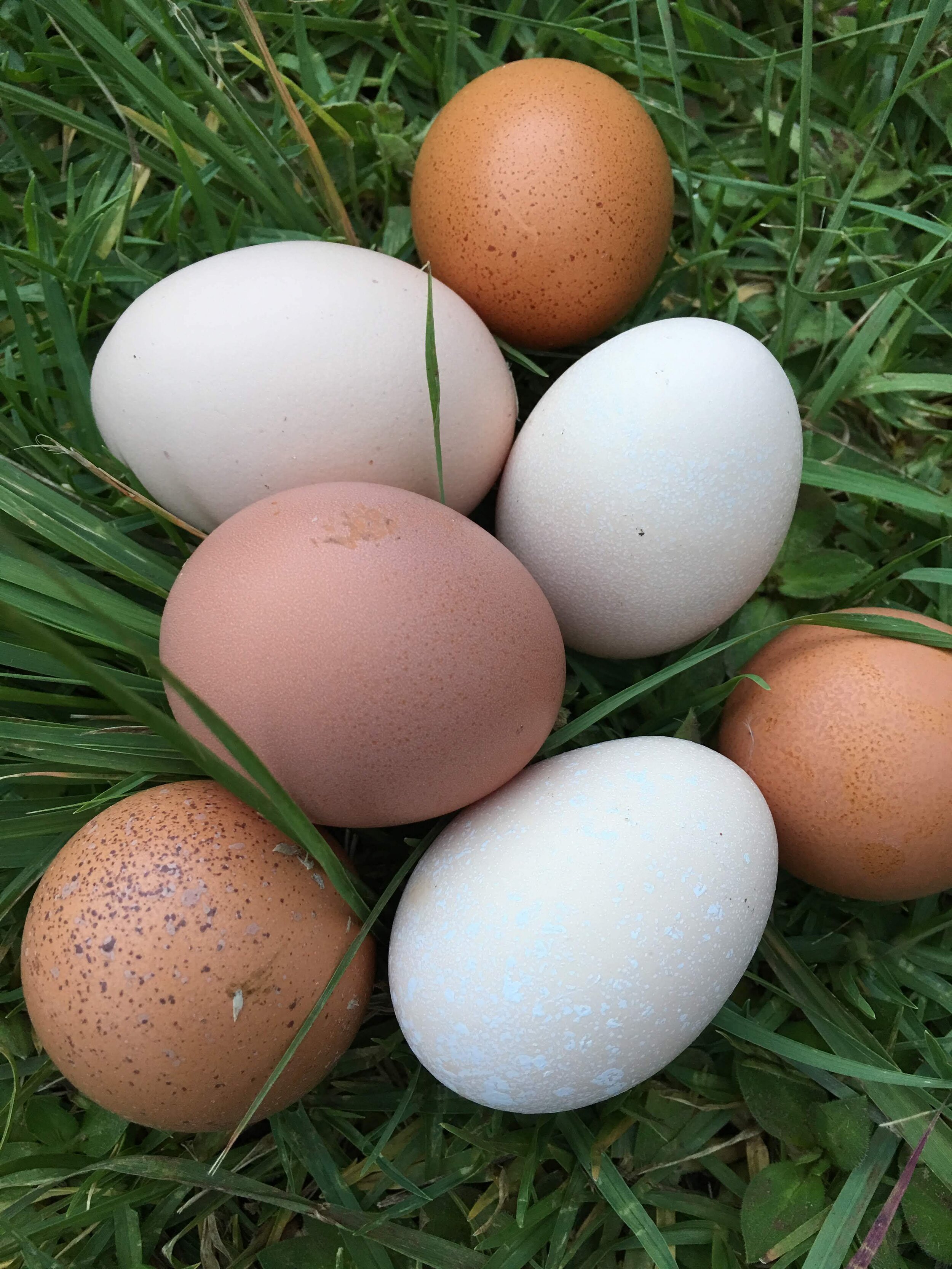FREE RANGE OR PASTURE RAISED?
We are often asked the difference between ‘free range’ and ‘pasture raised’ eggs and chickens. Especially since pasture raised poultry and products always come with a higher price tag.
In short, pasture raised animals are raised outdoors 24/7/365 and are moved regularly (usually every day). They are never cooped in the same place, but are free to come and go as they choose. Always mobile. That is the difference. Resting land is not only beneficial for the land itself but prevents the build up of parasites and disease, and breaks any disease cycles immediately. Pasture Raised poultry is the most natural approach and the results show in the product.
The term ‘free range’ can be misleading. Industrial operations and regulation free range are totally different to the image created by the term 'free range'. A small scale backyard flock may roam freely during the day, but always return to a stationary coop at night. This means some areas where the animals are herded in and out of will be damaged, while the cooping area is a risk for disease with manure build up and no rest.
There are two questions to be asked:
How are the animals treated?
How is the environment treated?
In terms of large industrial operations, by regulation, free range laying hens can live up to 15 birds per square meter, although the recommendation for laying hens is 10 birds per square meter. Free range chickens are raised largely in chicken houses, with thousands of other chickens. Small doorways along the side of the house that are opened periodically, giving hens the option of going outside, defines free range. One door per 700 hens. Laying hens will likely make use of these doorways but broiler (meat chickens) are less likely to waddle all the way across a house. Food is normally kept in feeders in the hen house so the chickens have to move away from the food to get outside. Being crammed into a shed together means that some chickens will never leave the house for fear of losing prime position next to food. The free range area should be adequate to have 5 birds per square meter. No grazing animals are allowed within the free range area.
Not all chicken houses are the same, some farmers do choose to give more freedom and outside access. Without a visit to the farm, you may never know whether the eggs or chickens you are buying are really free range or just skirting the regulations.
Having so many chickens confined in one house increases the risk of disease. The chickens remain in the same area for their life span. To combat this, many chicken producers will routinely administer antibiotics. Most chicken feed comes standard with antibiotics in the feed - even if a product is marketed as being antibiotic free, chances are that it means no routine use of antibiotics!
This is all without going into the accepted practice of beak trimming and how cage and barn raised chickens are expected to live.
Perhaps a backyard flock owner can run truly free range chicken but the scale will define how profitable the business is. A fair number of chickens are needed for a profitable business. If the chickens are kept in the same area, or herded back to the coop through the same area, then the second question becomes relevant - what is this doing to the land? A large number of chickens can very quickly destroy an area of land if not managed properly. Even a backyard flock can run a favoured grass patch bare, damaging the microbiology of the soil and leading to erosion. Land needs animal impact, but it also needs rest and recovery periods.
When you pay for cheaper meat, the question always has to be - what kind of scale allows for this price?
By contrast, pasture raised poultry are defined as “beyond free range”, a term coined by Joel Salatin. This means that the approaches taken to raise pasture based poultry exceed the regulations of free range with the aim of creating the most natural living conditions.
Pasture raised poultry trades mechanisation for labour and time with the aim of still creating a viable business, compared to a small backyard flock of scratchers. These approaches require a lot more observation and manual control by the farmer. For example, temperature regulated brooding houses are traded for smaller, manually controlled and monitored brooding areas (read: look with your eyes, hear with your ears, smell with your nose, and sense with your gut!). This means a lot of contact and observation, so problems are picked up very quickly. In the early stages, we check our broiler chicks every two hours, reducing to three times a day as they get older. This also means chickens are raised in smaller batches. The cost of this input means that the pasture raised chickens or eggs you buy have not been routinely medicated because farmers can quickly pick up and attend to individual issues if they appear.
As one pasture based farmer put it, essentially when you buy pasture based poultry, you are paying the farmer for his time.
- Darby Simpson - Grassfed Life Podcast
Pasture raised broilers are moved outside, on grass, as soon as they have their adult feathers. A gentle process of acclimatising takes place over about two weeks. Generally pasture raised broilers live in spacious mobile pens that are moved at least once day to new pasture. This gives the chickens hygienic living conditions and fresh forage. We have gone one step further with our broilers. They have two mobile enclosures within an electro-net. This gives them much more space to move around and lots of shade/cover should they require. They can go in and out of their pens as they choose. This works out to just over 2 birds per square meter. The square meterage provided per chicken is much higher, but that square meter also keeps changing every day as they are moved to new grass every day, sometimes twice a day. The electro-net manages the impact on the land, and keeps the stress of the chickens down by protecting them from predators.
Impact on grass of broilers when moved once a day
They do not have access to food all the time so they are encouraged to forage, and we feed them a couple of times a day using a medication, antibiotic, and hormone free feed. This ensures a balanced diet. The result is tender, flavourful meat, from chickens that lived their best life.
Pasture raised hens also have a mobile coop, kitted out with nesting boxes and roost space. The hens are enclosed in an electro-net (approx 156 square meters - currently we have less than half a bird per square meter but can house up to 1.6 birds per square meter in this way). Again, that square meter keeps changing as the chickens move regularly due to time - another input cost by the farmer. The ideal for pasture raised chickens is to have them follow a few days behind a herbivore, spreading manure, sanitising and softening up the soil again - much like you would expect to see a flock of egrets following a herd of buffalo. Instead of roosting in trees, they roost in a mobile coop, and move with the herd. Compare this to the regulation free range operation where grazing animals are not allowed in the open area.
Mobile coops generally have a slatted floor so all droppings fall through onto the grass below, keeping the coop clean and hygienic with no areas for manure build up and consequently disease.
But why do we use an electro-net? Surely we are confining them anyway and thus not truly free range? Firstly, we live in an area where the baboon and jackal are prolific. Add to this caracal, serval, and mongoose at night and you have a 24/7 recipe for a dangerous life. The purpose of the electro-net is double fold - to protect the hens and to ensure they know where their ‘safe’ base is (ie the coop) to lay and hide from dangers. Stressed hens, fearing threat, and constantly on alert, are not happy hens.
This mobile coop is moved every day, or every couple of days, depending on the pasture and recovery time of the grass/available forage to the hens. Our hens are also supplemented with a medication, antibiotic, and hormone free feed to ensure they get everything they need. While this is again very time intensive, it means the farmer spends a lot of time with the chickens and can pick up any changes in behaviour, laying, etc very quickly.
The result is a more flavourful but far healthier egg. Pasture raised eggs contain more vitamins and omega 3 fatty acids. So not only is this the most natural way of raising hens, and providing the best living conditions, but it also produces the best quality food for us.
All of this allows for chickens to be chickens. As Joel Salatin says, “appreciating the chickenness of the chicken”.
Check out Farmer Angus’ blog post on “free range” eggs - he writes a lot more succinctly than me! https://www.farmerangus.co.za/2014/05/13/the-biggest-lie-in-agriculture-is-free-range-eggs/
Or this blog post by Joel Salatin on raising broilers on pasture: https://www.thelunaticfarmer.com/blog/3/13/2019/anything-but-nature




















